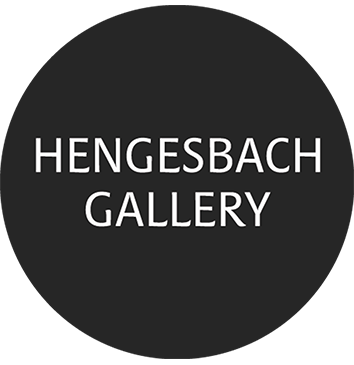Markus Willeke schafft mit der ungestümen, physischen Direktheit seiner Malerei einen Gegenpol zur amerikanischen Pop-Art. Entgegen der Billboard-Ästhetik, die durch das graphische Raster geprägt ist, steht Willekes gestischer Pinselschwung der Impulsivität des Graffiti und der Streetart nahe. Durch eine schnelle und kraftvolle Malweise erhalten die Bilder eine einzigartige Gewalt und Präsenz. Bindeglied zur Pop-Art ist der Umstand, dass Willekes Bilder unmittelbar agieren – das Bildgeschehen ist wie auf einen Schlag da und nicht der Ausgangspunkt von Erzählung. Die Macht der Bilder erwächst aus der Brillanz der Farbkontraste und der Gischt der Farbmaterie, die, wie aus einer gewaltigen Woge strömend, das Bild bedeckt. Die Bilder vermitteln den Eindruck, als ob sich ihre Inhalte zwanglos aus der Malerei ergeben, spontan im Akt des Malens erfunden sind. Daraus ziehen sie ihre Authentizität. Die Direktheit des Farbauftrags, die Leuchtkraft der Farben, die Schnelligkeit und Sicherheit der Pinselführung gibt den Bildern einerseits eine Magie und Unverrückbarkeit, andererseits eine Flüchtigkeit und Ungreifbarkeit.
Frühere Arbeiten des Malers zeigen Ikonen amerikanischer Populärkultur, an denen sich europäische Jugendkultur der 90er Jahre entzündete: Filmmotive aus „Die Simpsons“ und „South Park”, Videospielhelden, McDonald’s-Filialen, Pizzakartons. Die Bilder entfalten sich zu einer Bestands¬aufnahme medial geprägten, jugendlichen Bewusstseins. In ihrer Fiktionalität sind sie einfach da, ohne dass eine distanzierte Reflexion möglich wäre. Sie zeigen ohne Umschweife die sub¬kulturellen Auswüchse medial erregter Phantasien und artikulieren brillant den Punkt, in dem die Surrogate der virtuellen Welt eine Beständigkeit haben können.
Die jüngsten Arbeiten Willekes markieren häufig eine Grenzsituation – eine Glasscheibe, eine Wasseroberfläche, ein Rollo oder das Dickicht eines Feldes. Eine undurchdringliche Barriere dominiert den Vordergrund, sodass der Betrachter zu keinem Dahinter vorstoßen kann; er bleibt an der Oberfläche haften. Die Bilder hinterlassen ein Unbehagen darüber, was wohl hinter dieser Oberfläche lauern mag. Insofern sind die Motive die Weiterentwicklung eines visualisierten Bewusstseins und zwar in seiner Bedeutung als unkontrollierbarer Übergang, als die Spitze eines Eisbergs, dessen Grund nur schwer fassbar ist. Markus Willeke macht somit die Funktionsweise des Bildes in einer medialen Welt selbst zum Thema; er zeigt auf, wie Bilder lautlos die Schwelle unseres Verstandes passieren und sich unbemerkt einnisten.
With the heady, physical immediacy of his painting, Markus Willeke creates a counterweight to American pop art. Willeke’s gestural sweep of the brush is echoed in the impulsiveness of graffiti and street art, and deviates from the aesthetics of billboards, which are characterized by their graphic grid. Through a rapid and powerful method of painting, the pictures gain a unique force and presence. The link to pop art is the fact that Willeke’s paintings have an instant effect – what’s happening in the picture is there all of a sudden, and not as a starting point for narration. The power of the images arises from the brilliance of the colour contrasts and the spray of coloured matter which covers the picture, as if flying off the crest of a huge wave. The pictures give the impression of casual content which arises from painting, invented spontaneously during the act of painting. This is what gives them their authenticity. The application of colour shows directness, and the brightness of the colours, and the speed and sureness of the brushwork give the pictures a certain magic and solidity on the one hand, and on the other, volatility and elusiveness.
Earlier works of the painter show the icons of American popular culture which sparked European youth culture of the 90s: movie themes from the Simpsons and South Park, video game heroes, McDonald’s restaurants and pizza boxes. The pictures unfold to reveal a baseline study of adolescent consciousness defined by media. In their fictional status they are simply there, and reflection at a distance is just impossible. Without digressing, they show the sub-cultural excesses of media-fired fantasies and pinpoint brilliantly the exact moment when the surrogates from the virtual world can have consistency.
Willeke’s most recent works frequently mark a borderline situation – a pane of glass, the surface of water, a blind or the thickets of a field. An impenetrable barrier dominates the foreground, which means that the viewer cannot forge ahead to what lies behind; he ends up sticking to the surface.The pictures leave the viewer feeling uneasy about what may perhaps be lurking behind this surface. To this extent, the motives are the further development of a visualized consciousness, namely in its importance as an uncontrollable transition, or as the tip of an iceberg, whose base is quite incomprehensible.It is thus that Markus Willeke makes the way the picture functions itself an issue – he demonstrates how pictures move soundlessly through the barrier of our comprehension and settle there, unnoticed.
